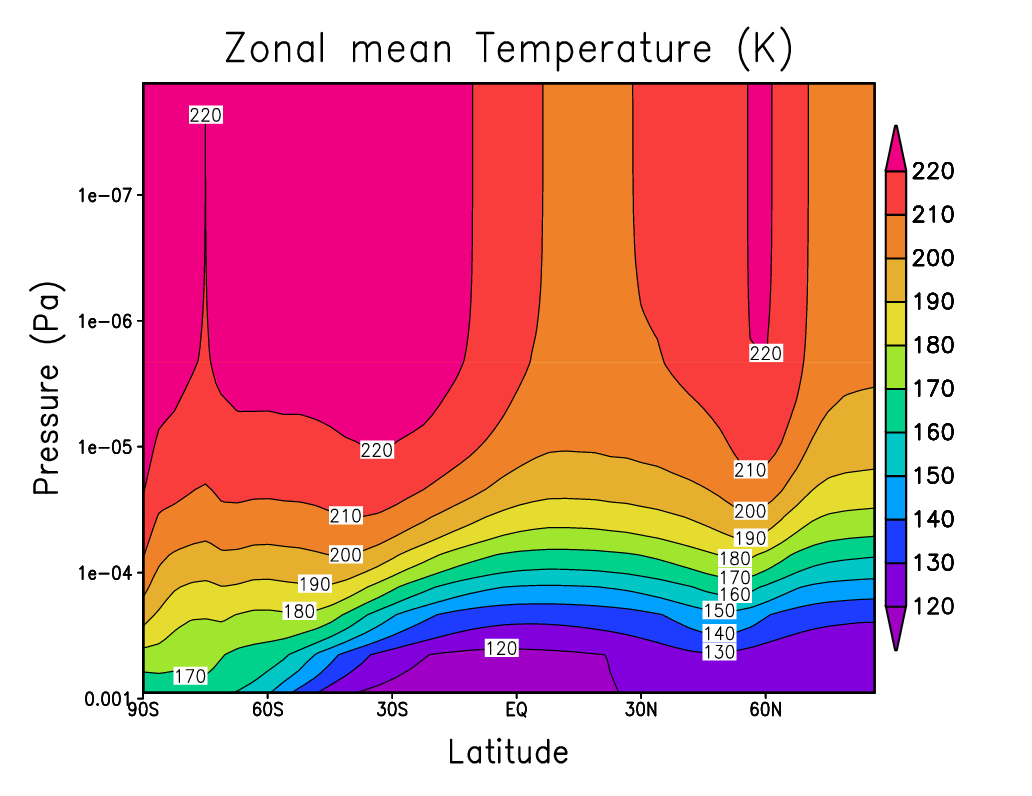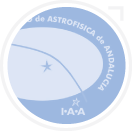WP07. Upper Atmosphere: Structure, composition & coupling with lower layers
General Objectives:
- Determination of the temperature and density structure of the dayside hemisphere of Mars from IR and UV atmospheric emissions observed by MEx
- Development and exploitation of computational models to simulate these atmospheric emissions
- Improve the characterization of the H escape
Responsible:
M. A. López-Valverde (CSIC)
Participants:
CSIC, CNRS, INAF
Scientific Interests:
The thermosphere of Mars can be considered as a transition region between the lower atmosphere and the exosphere. Knowledge of the physical state of the thermosphere is required in order to understand the escape of especies and Mar's evolution. Despite its importance, the thermosphere is probably the most unknown region of the Martian atmosphere. Most of the information of this region comes from the aerobraking manouvres performed by the MGS, MO, and MRO spacecrafts, and from the stellar occultations taken by SPICAM/MEx. The data prove that the Martian thermosphere is a complex and dinamically-active region, strongly affected by coupling with the lower region. Thus, the effects of dust storms and strong temperature variations in the lower atmosphere are clearly felt in the thermosphere. A global view of the atmosphere, from its interaction with the surface at the botton to its exchange space at the top, is required to understand this region. Read more.

Miguel Ángel López Valverde (IAA-CSIC) - WP.07 Responsible
Scientific Impacts:
Densities and temperatures in the daytime upper atmosphere obtained within UPWARDS will describe this atmospheric region in unprecedented detail, permitting the validation and improvement of global models at these altitudes, in particular with respect to dayside temperatures. The dayside upper atmosphere will be explored systematically for the first time. The comparison with the existing night side datasets will allow for the first time for a consistent description of the diurnal variability of the Martian thermosphere. The variability obtained will help to decipher the controlling parameters (effects of the lower atmosphere vs solar variability), with the help of models, and to quantify and uncover the extent of the dynamical connections with the lower atmosphere. This in turn will help to realistically constrain the margins needed for aerobraking manoeuvres and to design future missions.

LMD-IAA zonal mean temperature structure for Ls=90 (F.González-Galindo)
The incorporation of the UV dayglow model into the LMD-MGCM will generate a new operative capacity in this GCM. The creation of global maps of the UV emissions, that will be made available to the community, will permit framing future measurements of these emissions (like for example, from the upcoming NASA Maven mission) in conjunction with past missions.
The study of the Lyman-alpha emissions, together with the improved vision of the upper atmosphere, will provide a better estimation of the present-day escape rate and the factors that produce its variability, quantifying the effect of the solar variability and of the variability of the lower atmosphere. This information will be very useful for understanding the evolution of the Martian atmosphere, in particular by extrapolating the results to the Martian conditions some billions years ago (enhanced UV solar flux, higher atmospheric pressure).

































